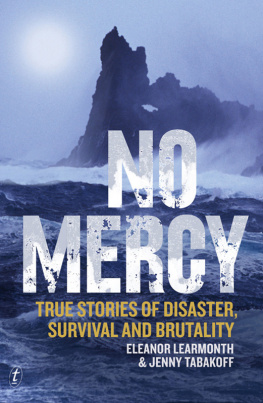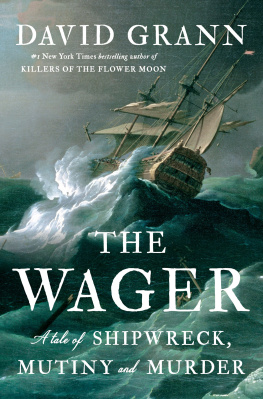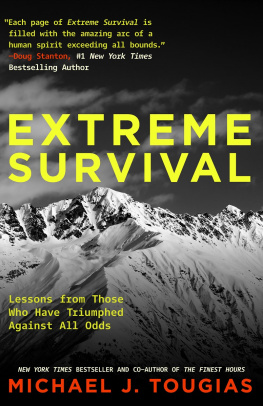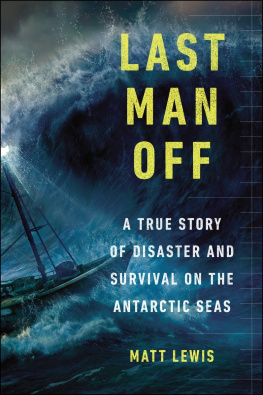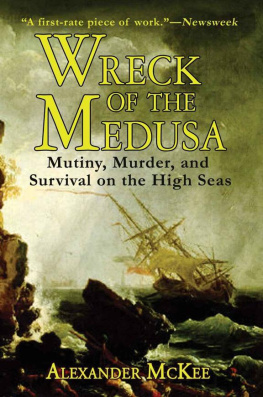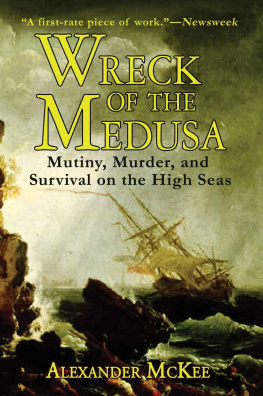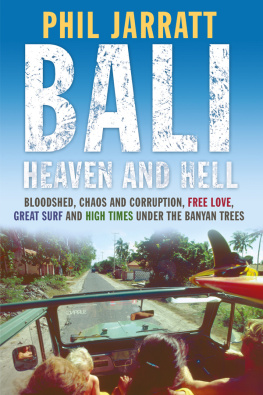NO MERCY
ELEANOR LEARMONTH has worked as a teacher and freelance journalist in Japan and Australia. She has a reputation as a magnet for natural disasters.
JENNY TABAKOFF has been a senior journalist in Australia and Britain for The Times, the Sydney Morning Herald and AAP. She is the co-author of Australian Style.
NO
MERCY
TRUE STORIES OF
DISASTER, SURVIVAL
AND BRUTALITY
ELEANOR LEARMONTH
& JENNY TABAKOFF

textpublishing.com.au
The Text Publishing Company
Swann House
22 William Street
Melbourne Victoria 3000
Australia
Copyright 2013 by Eleanor Learmonth and Jenny Tabakoff
The moral right of Eleanor Learmonth and Jenny Tabakoff to be identified as the authors of this work has been asserted.
All rights reserved. Without limiting the rights under copyright above, no part of this publication shall be reproduced, stored in or introduced into a retrieval system, or transmitted in any form or by any means (electronic, mechanical, photocopying, recording or otherwise), without the prior permission of both the copyright owner and the publisher of this book.
First published in 2013 by The Text Publishing Company
Cover design by WH Chong
Page design by Imogen Stubbs
Typeset in Bembo by J&M Typesetting
Maps by Guy Holt
Printed and bound in Australia by Griffin Press, an Accredited ISO AS/NZS 14001:2004 Environmental Management System printer
National Library of Australia Cataloguing-in-Publication entry
Author: Learmonth, Eleanor. Tabakoff, Jenny.
Title: No mercy : true stories of disaster, survival and brutality / by Eleanor Learmonth and Jenny Tabakoff.
ISBN: 9781922147240 (paperback)
9781922148308 (ebook)
Subjects: Disaster victims.
Survival.
Intergroup relations.
Social interaction.
Dewey Number: 613.69
To my family,
particularly Eric, Nina and Nicky
for their support, encouragement and faith.
Eleanor

To Stuart.
If Im ever on a desert island,
I hope its with you.
Jenny
Lenfer, cest les autres.
Hell is other people.
JEAN-PAUL SARTRE
CONTENTS
1 Numantia siege, Spain, 134 BC
2 Vinland, Newfoundland, 1010 AD
3 Batavia shipwreck, Abrolhos Islands, Western Australia, 1629
4 Raft of the Medusa, Mauritanian coast, 1816
5 Wager mutiny, Patagonia, 1741
6 Grafton and Invercauld shipwrecks, Auckland Island, 1864
7 Robbers Cave experiment, Oklahoma, 1954
8 Greely expedition, Cape Sabine, 18834
9 Sir John Franklin's lost expedition, King William Island, 1847
10 Jonestown, Guyana, 1978
11 Belgica trapped in pack ice, Bellingshausen Sea, Antarctica, 18979
12 Bounty mutineers, Pitcairn Island, 1790
13 Uruguayan Flight 571 crash, the Andes, Argentina, 1972
14 Karluk, Wrangel Island, East Siberian Sea, 1914
15 Whaleship Essex, Pacific Ocean, 1820
16 Charles Hall's Polaris expedition, 1871
17 Lifeboat of the William Brown, Atlantic Ocean, 1841
18 Alexander Pearce's convict group, Tasmania, 1822
19 Charles Manson's Family, California, 1969
20 Biosphere 2, Arizona, 19913
21 Commerce wrecked near Cape Bojador, Western Sahara, 1815
22 DonnerReed wagon train, Sierra Nevada Mountains, California, 18467
23 San Jos Mine collapse, Atacama Desert, Chile, 2010
A GROUP OF boys find themselves stranded in a beautiful but isolated environment. For a brief period things go well but then human nature starts to assert itself, and their mini-society descends swiftly into antagonism, hostility and violence.
That was the fascinating premise of a book published in 1954.
Actually, two such books were published that year. One was William Goldings Lord of the Flies: a work of fiction that was slow to take off with the public but eventually sold millions and became a modern classic. The other, Muzafer Sherifs TheRobbers Cave Experiment, was factual: a scholarly text that also became highly influential, although much less famous.
Lord of the Flies was Goldings fourth attempt at a novel, the previous works having been rejected by publishers. The spark that lit Goldings creative fuse this time was his scorn for the books he had been reading to his own children, particularly R. M. Ballantynes The Coral Island. He found its depiction of boys, living in an island utopia of constructive co-operation, fun and camaraderie, deeply unconvincing. Golding, who was working as a teacher in a boys school at the time, pictured instead a disturbing, violent dystopia.
In 1953, as Golding worked his way through rejections from seven literary agents and publishers, an experiment was taking place in Oklahoma that would start with a very similar premise. Twenty-two boys were let loose in a deserted scout camp in the Robbers Cave State Park by a team of psychologists headed by Muzafer Sherif and his wife Carolyn. The boys were given food and shelter and almost-complete autonomy, with the researchers there only to observe them. In a very short time they abandoned their civilised conditioning and turned on each other. The result was without question more Golding than Ballantyne.
Any reader unfamiliar with Lord of the Flies can find a brief prcis at the end of the book, along with a more detailed account of what happened at the Robbers Cave site. However, because Sherifs experiment is less well known, its worth giving a brief description here.
The overarching aim of the experiment was to generate friction between two groups of strangers, and then bring them together to resolve their differences by forcing them to co-operate. The participants, who thought they were attending a normal summer camp, were eleven-year-old boys.
The psychologists wanted a homogenous group of intelligent, well-adjusted boys with no anti-social problems, so they carefully selected boys with similar backgrounds from happy, middle-class white families. The researchers pretended to be camp staff and janitors, and melted into the background. The boys were divided into two groups before arriving: the Rattlers and the Eagles.
In phase one of the experiment, each group was left alone for a week of camping, hiking and swimming. Both established their own hierarchies and group norms, unaware of the other groups existence. Then each group made an unsettling discovery: there were other boys living at the far side of their camping ground. Before the Rattlers and the Eagles had even met, the first signs of rivalry, territorialism and aggression appeared.
The announcement by the staff of a five-day tournament between the two tribes sparked an even greater hostility, and as soon as the groups set eyes on each other the insults started to fly. After losing an early contest the Eagles dispensed with their complacent leader; a more aggressive boy seized power and immediately threatened to beat up anyone on his own team who didnt take the competition seriously. The first day ended with the Eagles seizing and burning the Rattlers flag; the next day the Rattlers destroyed the Eagles flag. Brawls erupted and the researchers had to break them up.
Later the Rattlers executed a night raid on the Eagles camp, wearing full war paint to terrify the enemy. They raced into the cabin unopposed: crashing, smashing and stealing. The Eagles leader rounded on his routed troops, accusing them of being yellow, and they subsequently carried out a counterattack on the Rattlers camp armed with sticks and baseball bats. Then, mission accomplished, they retreated and rearmedthis time filling socks with stones.
Next page
